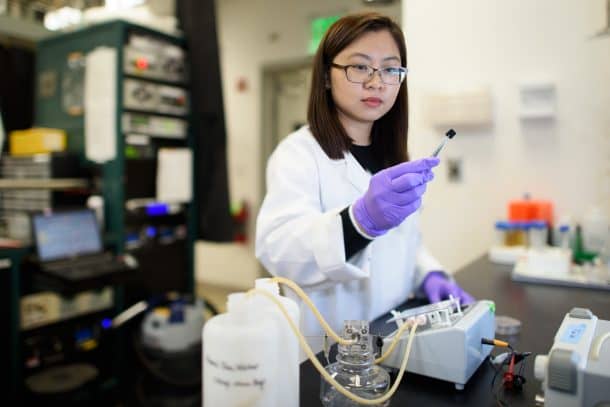The use of nuclear energy has been controversial since the very first day. However, there is no denying the fact that the nuclear power is a much more viable energy source than the fossil fuels. Although the metal is mostly found in underground reserves, yet, the seawater is also a source of Uranium and contains it in traces.
There has been no practical method to extract traces of Uranium from the seawater in sufficient quantities to make it a viable energy source. A team from Stanford has now developed a method to extract the metal with a higher capacity, lesser time, and better re-usability. The research was published in the journal Nature Energy. The material scientist Yi Cui, who is also the co-author says,
“Concentrations are tiny, on the order of a single grain of salt dissolved in a liter of water. But the oceans are so vast that if we can extract these trace amounts cost effectively, the supply would be endless.”
The study comes with the essential purpose of reducing the carbon emissions by using alternative carbon-free energy sources. Advances in wind and power energy cannot replace the need for nuclear energy as the latter can always be turned off and on to provide sufficient power to the changing demands.
The method previously used for the extraction of uranium from the sea requires the use of plastic fibers. Uranium exists in seawater in the form of uranyl ions having a positive charge. Plastic fibers, containing amidoxime, are dipped into seawater to which the uranyl ions stick. The plastic is then, chemically treated to extract and refine the uranium just like an ore from a mine. The process is time-consuming and not very cost-effective.

Source: Stanford
The team created their conductive fibers made of carbon and amidoxime. The fibers allow sending jolts of electricity to gets more uranyl ions attached as compared to that of the conventional methods. The technique has significantly improved the amount of metal that can be extracted by increasing both the capacity and speed of capturing the ions. The new method even improves on the re-usability of these fibers. Over a period of just 11 hours, the conductive carbon fibers captured the metal up to three times as much as the conventional fibers and were found to be three times more usable.
The method has been found to be much more viable, but we are far from making the process practical on a commercial scale. Another co-author of the study Steven Chu says,
“We need nuclear power as a bridge toward a post-fossil-fuel future. Seawater extraction gives countries that don’t have land-based uranium the security that comes from knowing they’ll have the raw material to meet their energy needs.”
The future requires a reduction in the carbon emissions, and the research is another step forward to achieve this purpose.


